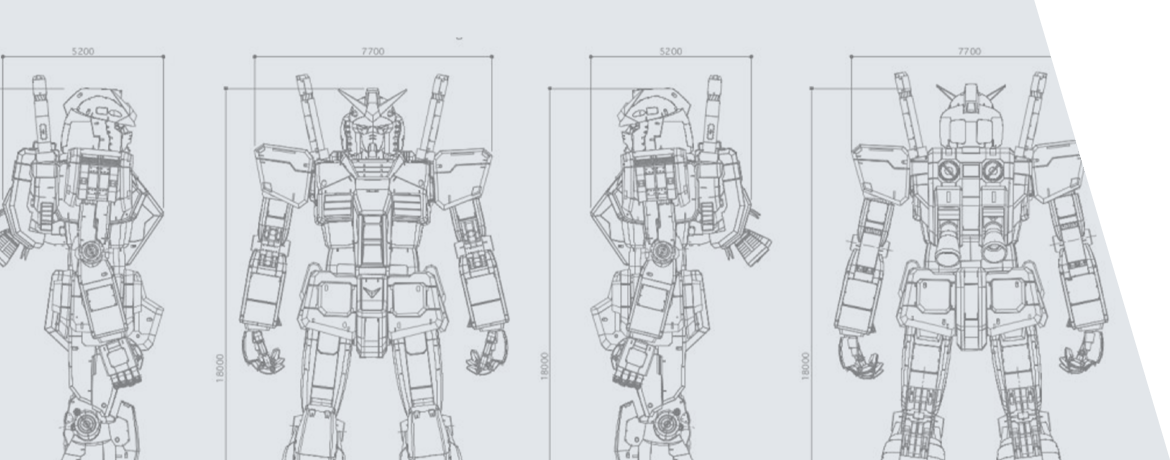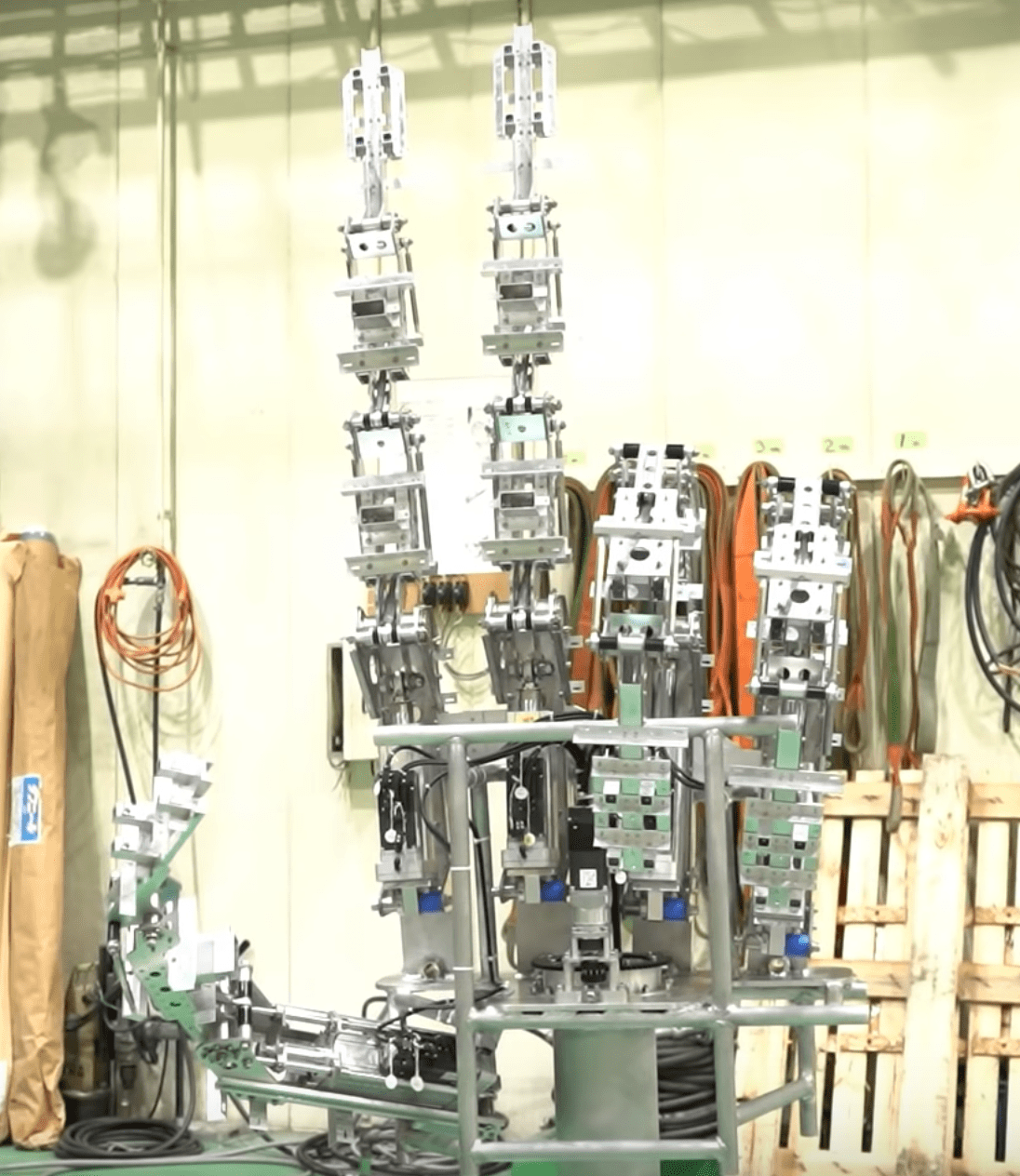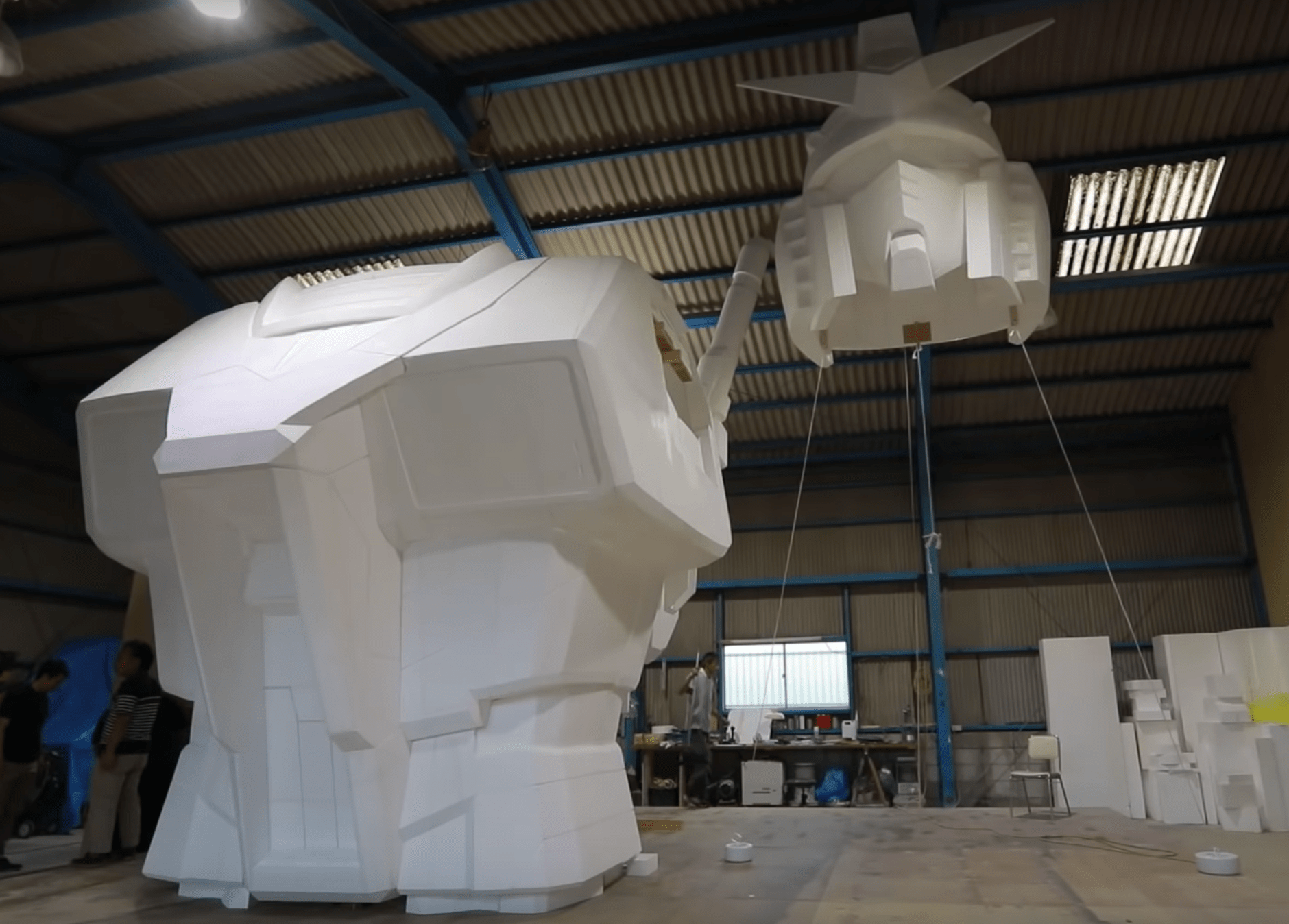
Sotsu/Sunrise/Gundam Factory Yokohama
- The world’s largest humanoid robot is currently being built in Yokohama, Japan.
- Modeled after Gundam, a humanoid robot that stars in various anime series, films, manga, and more, the robot will be almost 60 feet tall.
- It won’t debut until October, but there is a 64-foot-tall Gundam statue in Tokyo, in the meantime.
At the Port of Yokohama, just south of Tokyo, the world’s largest humanoid robot will come to life. Modeled on Gundam, the popular fictional robot that has been the subject of some 50 TV series and movies since 1979, plus a slew of video games and manga, the bot will tower nearly 60 feet tall and feature 24 degrees of freedom. So yes, this thing will be able to walk.
Since 2017, Tokyo has had a massive Gundam statue in its Odaiba neighborhood, coming in at almost a whopping 65 feet. So why stop there? Why not give the Gundam real movement?
Groundwork for the robot is already being laid, as scaffolding is presently in place at Yamashita Pier, where the mega-Gundam will live for a full year, beginning in October. But the engineering challenges will be great, as the current level of expertise in actuation will be pushed to the limit. It’s one thing to merely build a bipedal walking robot it’s a whole other challenge to build one that’s 60 feet tall and weighs 25 tons.
Several videos from the Gundam Channel outline the creation process. In the second installment, we get a tour of where the hands are being designed, built, and assembled. From the metal fingertip to where the wrist will connect, the hand is about 6.5 feet, or approximately one Big Ben Roethlisberger.
Narita has to ensure the hands weigh about 200 kilograms, closer to 440 pounds. Any heavier, and excess strain will be put onto the elbow joints when the arms move, meaning it’ll likely break and poor Gundam will lose his limbs. In the end, Narita reduced the number of motors used in the hands and decided to build the frame for the hands out of aluminum, rather than steel. The hands can now move, and even have the ability to form the peace sign.
Meanwhile, the overall design work is in pretty capable hands. Masaki Kawahara, lead designer for the Gundam robot, has some serious chops as this is the fourth time he’s built a life-sized Gundam. While some of those, including the current statue in Tokyo, are taller than the forthcoming humanoid robot, none of them could walk.
“Up until now, we’ve tried to design them to be strong in terms of both looks and structure,” Kawahara says in another video installment. “This time, there are a lot of other things that we need to consider.
Still, there are some personalities about as big as Gundam himself that the designers and engineers must please. Namely, that’s General Director Yoshiyuki Tomino, the mecha anime creator who is known as The Father of Gundam. While looking over an early design of Gundam’s body, not yet crafted out of metal, he comments on Kawahara’s design.
“I don’t like how straight the lines are,” he says. “It’s just not interesting.” And while the team seems to freeze up a bit while Tomino is in the building, he does point out some important design flaws. The portion of Gundam where the pilot should sit to teleoperate the robot is too small for a person to sit in with a full protective suit on, he points out. So the team made the hole wider.
Really, though, all Tomino wants is for the team to take some creative measures in bringing the 41-year-old Gundam to life for a 2020 audience. “I feel like there’s room for some more modern interpretations or additions in the current design,” Tomino says.
The good news: Based on a simulation from the University of Tokyo’s JSK Lab, all the design work looks promising from a technical standpoint. At least in the confines of the simulation tool shown in the video above, the enormous Gundam can successfully walk. Whether or not the real robot will be able to pull it off is yet to be seen. We’ll just have to wait for another teaser video—or you’ll have to catch a flight to Japan this fall.


